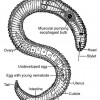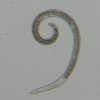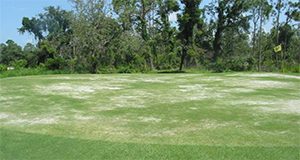Plant-parasitic nematodes are among the least understood and most difficult pests to manage on turfgrass in Florida. They are very small, and most can only be seen with the aid of a microscope. They use a stylet to puncture plant cells, to inject digestive juices into them, and to ingest plant fluids. The most reliable way to determine whether plant-parasitic nematodes are involved in a turf problem is to have a nematode assay conducted by a professional nematode diagnostic lab. This 6-page fact sheet was written by William T. Crow, and published by the UF Department of Entomology and Nematology.
http://edis.ifas.ufl.edu/ng039
Tag: Lawn Nematodes
Nematode Management in Residential Lawns (ENY006/NG039)
 Plant-parasitic nematodes are among the least understood and most difficult pests to manage on turfgrass in Florida. They are very small, and most can only be seen with the aid of a microscope. They use a stylet to puncture plant cells, to inject digestive juices into them, and to ingest plant fluids. The most reliable way to determine whether plant-parasitic nematodes are involved in a turf problem is to have a nematode assay conducted by a professional nematode diagnostic lab. This 6-page fact sheet was written by William T. Crow, and published by the UF Department of Entomology and Nematology, April 2013.
Plant-parasitic nematodes are among the least understood and most difficult pests to manage on turfgrass in Florida. They are very small, and most can only be seen with the aid of a microscope. They use a stylet to puncture plant cells, to inject digestive juices into them, and to ingest plant fluids. The most reliable way to determine whether plant-parasitic nematodes are involved in a turf problem is to have a nematode assay conducted by a professional nematode diagnostic lab. This 6-page fact sheet was written by William T. Crow, and published by the UF Department of Entomology and Nematology, April 2013.
http://edis.ifas.ufl.edu/ng039
Spiral Nematode, Helicotylenchus pseudorobustus (Steiner, 1941) Golden, 1956 (Nematoda: Tylenchida: Hoplolaimidae) (EENY544/IN973)
 Spiral nematodes of the genus Helicotylenchus are among the most ubiquitous plant-parasitic nematodes worldwide. Helicotylenchus pseudorobustus is a species common in Florida and the southeastern United States and is frequently found associated with turfgrasses and other grass hosts in the region. On most plants, it is not considered particularly damaging, but recent research has shown that this species suppresses growth of certain turfgrass hosts. Seashore paspalum, a turfgrass used in tropical and subtropical regions, is particularly susceptible to infestation. This 4-page fact sheet was written by William T. Crow, and published by the UF Department of Entomology and Nematology, January 2013.
Spiral nematodes of the genus Helicotylenchus are among the most ubiquitous plant-parasitic nematodes worldwide. Helicotylenchus pseudorobustus is a species common in Florida and the southeastern United States and is frequently found associated with turfgrasses and other grass hosts in the region. On most plants, it is not considered particularly damaging, but recent research has shown that this species suppresses growth of certain turfgrass hosts. Seashore paspalum, a turfgrass used in tropical and subtropical regions, is particularly susceptible to infestation. This 4-page fact sheet was written by William T. Crow, and published by the UF Department of Entomology and Nematology, January 2013.
http://edis.ifas.ufl.edu/in973
